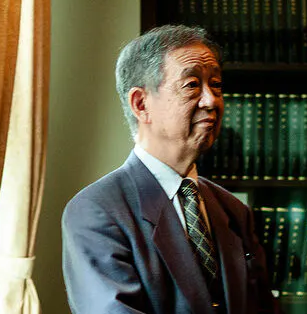
Susumu Shimazono, Professor Emeritus in the Graduate School of Humanities and Social Sciences, University of Tokyo
Spiritual Innovation vs New Spirituality
The concept of “spiritual innovation” is new to me and to Japanese scholars. It sounds very American. I think scholars of religion and sociologists would prefer different terminology. Since around 1990, I have proposed the term “new spirituality” to refer to new spiritual movements and culture. I define new spirituality as spirituality which is independent from major religious traditions, and which appears conspicuously around 1970 and after, first in the USA and then in many parts of the world including Japan.
During the last two decades of the 20th century and the first two decades of the 21st, the term "spirituality" came to be recognized as something that affected a wide range of people, both those who identified with traditional religions and those who considered themselves "non-religious." While initially centered on young people, this "new spirituality" gradually expanded to include a wide range of people, young and old.
An Example of New Spirituality in Japan: Grief Care
1995 was the year of the Aum Shinrikyo Tokyo subway sarin gas attack, and that same year saw the publication of Satoru Saito's In Search of a Soul Family: My Theory of Self-Help Groups (Nippon Hyoronsha). Saito is a psychiatrist who contributed to the spread of the 12-step self-help group movement, which originated from Alcoholics Anonymous (AA), in Japan. AA established a 12-step philosophy for alcoholics to support each other and live their lives in accordance with that philosophy.
This is related to the development of medical care for the dying, which began with the hospice care movement in the late 1970s and expanded to include palliative care in general. In public areas such as medicine, secular standards prevailed during the modernization process, and spiritual concerns were considered to be left to private religiosity. However, in reality, care in the public sphere inevitably involves spiritual aspects. Doctors, nurses, and other medical professionals began to accept spiritual care as their own responsibility, and in response, education and academic research addressing death developed.
However, the care required in modern society goes beyond caring for the dying. Likewise, spiritual pain is not limited to the anguish of facing death. While these issues were once considered the domain of religion, they are now being addressed in various sectors of modern society and by individuals. A clear example is grief following bereavement. In contrast to first-person death, i.e., one's own death, second-person death, or the anguish caused by the death of a very close relative or friend, is gaining increasing attention.
Rituals and discourse surrounding death are closely linked to religion. However, “Death and Life Studies” does not limit itself to the rituals and views on death and life within the framework of a particular religion. It considers how to confront death by studying the views on death and life, and rituals of various religious traditions and cultures, as well as various academic fields and the arts. Ceremonies for the farewell of the deceased have traditionally been held in conjunction with religion. In Japan, there are many opportunities to commune with the dead, such as wakes, funerals, burials, first and third anniversaries, and grave visits on the anniversary of the death or during the equinox. Japanese people tend to perceive the dead as beings close to them, but in modern times, the religious and ritual culture that supports this is in decline. In its place, a new culture of grief care is needed.
For example, various memorials and memorial facilities have been established in areas affected by the Great Hanshin-Awaji Earthquake and the Great East Japan Earthquake. Memorial facilities are established at the site of shocking accidents or incidents. A well-known example is Mount Osutaka in Gunma Prefecture, where a Japan Airlines jumbo jet crashed in 1985, killing over 500 people. Even today, on August 12th, bereaved families climb the mountain and pray in front of the memorial facility. Some people visit multiple times a year, believing they can meet their deceased there. These memorial and memorial services are also attended by families of victims of accidents and disasters other than those affected by the JAL crash. They are a new type of memorial and memorial service, not tied to a specific religion, and a place for grief care. They are also a notable example of a place for spiritual expression in modern society.
Read More Definitions of Spiritual Innovation
- Ristina Gooden, Spiritual innovation leader and scholar focused on Black women
- Sandy Hong, Spiritual innovation trainer and practitioner focused on the US and Korean diaspora
- Edina Leković, Muslim thought leader and community builder
- Noosim Naimasiah, Pan-African scholar-activist
- Sid Schwarz, Jewish thought leader and convener of spiritual innovators
- Cristine Takuá, Maxakali Indigenous philosopher and educator
- Brandon Vaidyanathan, Catholic sociologist and spiritual innovator
Discover More Resources
Transreligiosität 2020
A theological article on transreligiosity—the ability to cross traditions while holding spiritual depth.
interfaith Spiritual Books, Videos and acclaimed educational programs for youth

